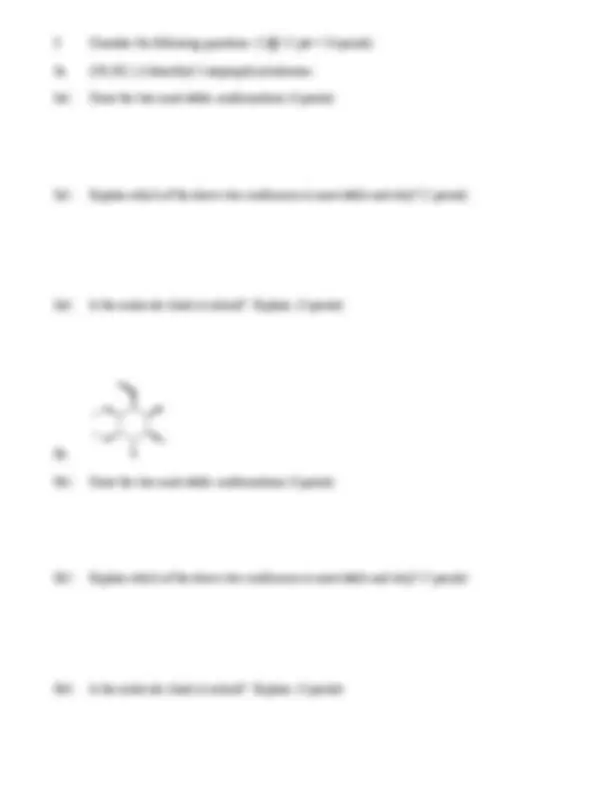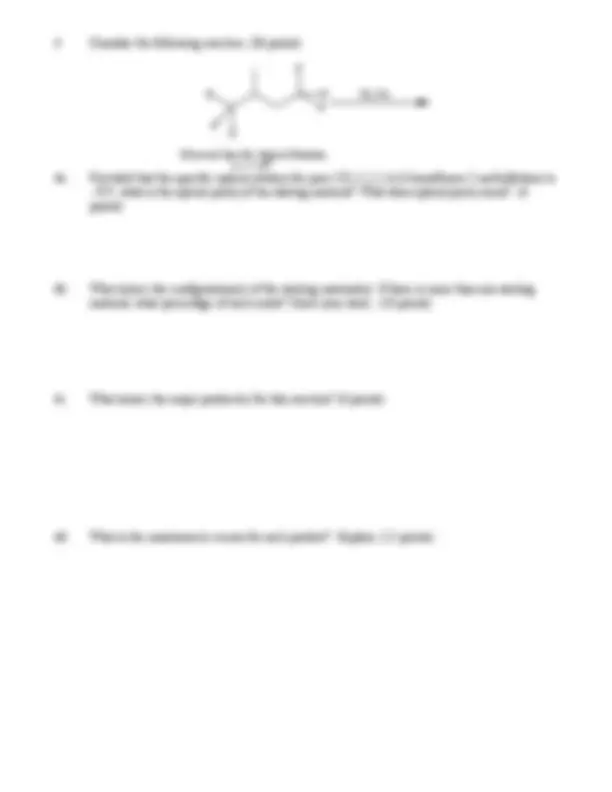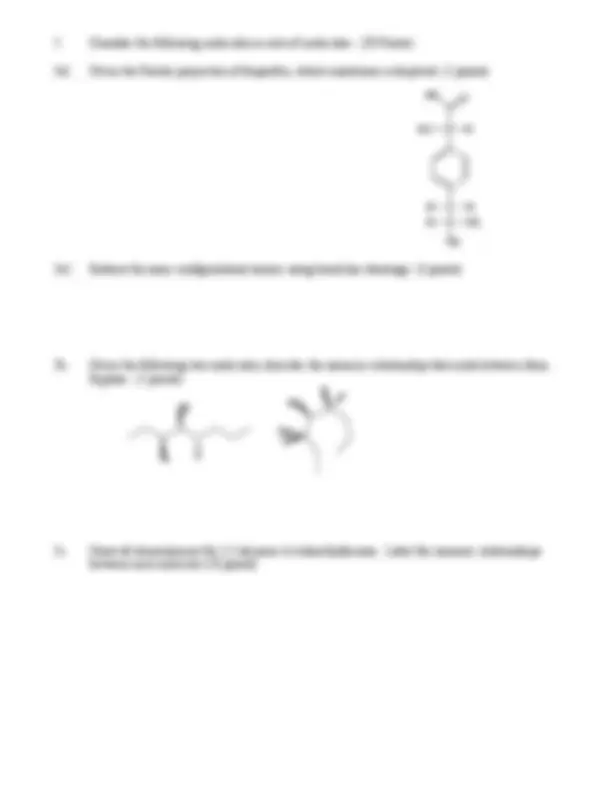





Study with the several resources on Docsity

Earn points by helping other students or get them with a premium plan


Prepare for your exams
Study with the several resources on Docsity

Earn points to download
Earn points by helping other students or get them with a premium plan
Community
Ask the community for help and clear up your study doubts
Discover the best universities in your country according to Docsity users
Free resources
Download our free guides on studying techniques, anxiety management strategies, and thesis advice from Docsity tutors
A chemistry exam focusing on the concepts of enantiomers, diastereomers, conformations, and optical rotation in organic chemistry (chem 231a). It includes multiple-choice questions on defining and identifying various stereoisomers, drawing their structures, and explaining their properties. Additionally, there are questions on calculating optical purity and determining the major products of a reaction.
Typology: Exams
1 / 5

This page cannot be seen from the preview
Don't miss anything!




Name:
Test # November 5, 2001
1a. What is an enantiomer? Provide examples that represent the concept and explain. (5 points)
1b. What is an diastereomer? Provide examples that represent the concept and explain. (5 points)
1c. What is a meso compound? Provide an example that represents it and explain why it is a good example. (5 points)
1d. What is a transition state? Provide an example that represents it and explain why it is a good example. (5 points)
1f. What forces affect the stability of cycloalkanes? Provide examples, drawings and an explanation. (10 points)
2a.
Br
2b.
OH
H 3 CO
2c.
Br
2d. [2S,3R,4S,5R] 2-bromo-4-t-butyl-5-chloro-3,6-diethyloctane
F
F
F
Cl 2 / hν
Observed Specific Optical Rotation α = + 63o
F
F
F
4a. Provided that the specific optical rotation for pure (2S)-1,1,1,4,4,4-hexafluoro-2-methylbutane is
4b. What is(are) the configuration(s) of the starting material(s) If there is more than one starting material, what percentage of each exists? Show your work. (10 points)
4c. What is(are) the major product(s) for this reaction? (8 points)
4d. What is the enantiomeric excess for each product? Explain. (12 points)
5a1. Given the Fischer projection of ibuprofen, which enantiomer is depicted. (2 points)
H CH (^3)
HO O
H 3 C H
H H
CH 3
5a2. Redraw the same configurational isomer using bond-line drawings. (3 points)
5b. Given the following two molecules, describe the isomeric relationship that exists between them. Explain. (5 points)
Br
OH
H
Br
HO
H
5c. Draw all stereoisomers for 2,5-dicyano-3,4-dimethylhexane. Label the isomeric relationships between each molecule (10 points)